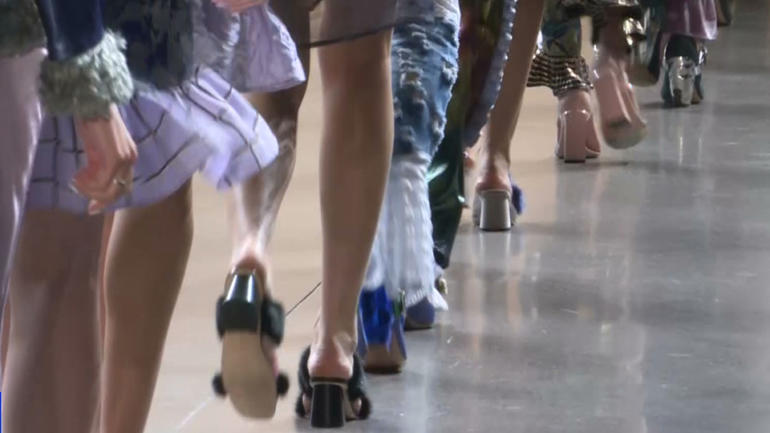Fashionistas have descended upon New York to check out the latest looks from the world’s top designers but this year the mood is somewhat subdued as it marks the first fashion week since the implementation of tariffs on Chinese imports. Some brands are worried clothing made in China could be the next target. That would have big implications for the fashion industry. CGTN’s Karina Huber has more.
New York Fashion Week is in full swing with designers from around the world showcasing their latest looks. Many of the garments on display will be made in China, which accounts for roughly 36 percent of global clothing exports.
Other countries like Bangladesh, Vietnam and India also manufacture a lot of what you’ll see on the catwalk, but China is still king when it comes to American clothing imports.
The fashion industry is starting to feel the chill from the trade war started by the Trump administration. Roughly $35 billion worth of clothing made in China is exported to the U.S. every year. While clothing has largely been excluded from the list of targeted items, the worry is that could change.
Just last week Trump threatened to slap tariffs on another $267 billion worth of Chinese goods. That is on top of the $200 billion worth he’s already targeted. If he follows through with his new threat –everything – including clothing and shoes – imported from China would be subject to tariffs.
According to a new poll by the U.S. Fashion Industry Association, two-thirds of large-sized U.S. retailers are planning to reduce the amount of goods they buy from China.
The reaction among Chinese designers showing at New York fashion week was mixed.
Vivienne Hu, who makes some of her garments in China and some in New York, says the U.S. is her biggest market. If clothing manufactured in China gets hit with U.S. tariffs, she would consider shifting production out of China to other countries.
“We do budget planning – a lot of strict budget planning. We will check what is going on with the next step. If it turns out it is over our budget, we will definitely find a better solution,” said Hu.
For Wang Tao, the designer of Taoray Wang, a trade war is less of a concern. Her biggest market is China. She is also shielded from retaliatory tariffs China might enact as none of her clothes are made in the U.S.
“It’s slightly different because I don’t open a lot of shops on the street. I am doing made to measure – made to order – made to measure so maybe it doesn’t really effect my business,” said Wang Tao.
A trade war between China and the U.S. that includes clothing will surely hit some designers harder than others. Shifting production out of China isn’t done easily, or quickly. But perhaps the biggest casualty would be U.S. consumers who would likely see prices rise.
Joshua Williams explains how trade war could be trimming the fashion industry bottom line
CGTN’s Rachelle Akuffo spoke with Joshua Williams, professor at Berkeley College, about the impact of tariffs on the fashion industry.
 CGTN America
CGTN America

